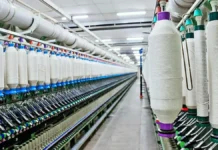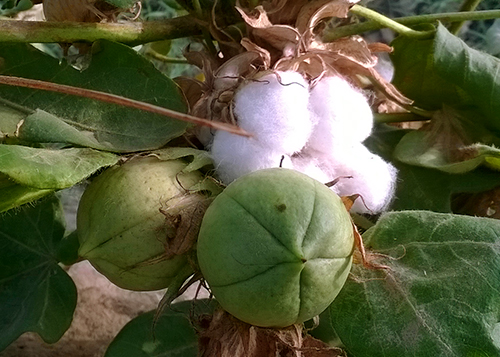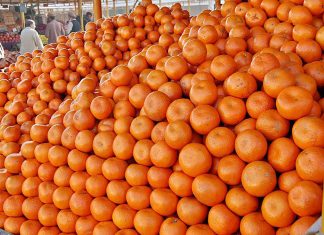LAHORE: The cotton industry in Pakistan is reeling from a dramatic 60% drop in production across Punjab and Sindh by the end of August, raising serious concerns within the textile sector. This shortfall is compelling the industry to import lint from international markets, straining the country’s already limited foreign exchange reserves.
A discrepancy of over 0.3 million bales between the figures provided by Punjab’s Crop Reporting Service (CRS) and the Pakistan Cotton Ginners Association (PCGA) has added to the confusion, leaving industry players uncertain about their procurement strategies moving forward.
The PCGA reported that only 1.226 million bales had reached ginning factories nationwide by August 31, marking a steep 60% decline from the 3.04 million bales produced during the same period last year.
This significant drop in cotton output is attributed to several factors: a reduced trend in early sowing, a prolonged heatwave in June and July causing fruit shedding, heavy rains in August, attacks by whitefly and pink bollworm, shrinking crop acreage, the absence of a government intervention price, market manipulation by vested interests, declining crop profitability, and a lack of government support for research and development.
Sindh’s production plunged by 61%, with only 0.773 million bales produced compared to last year’s 1.972 million bales during the same period. Punjab saw a 58% decrease, with just 0.453 million bales reaching ginning factories, down from 1.068 million bales last year.
The Punjab CRS reported a slightly different figure, claiming the province harvested 0.759 million bales, still over 30% less than the previous year’s production. Dr. Abdul Qayyum, Director-General of CRS, explained that the agency calculates production at the farm level based on the size and picking ratio of cotton bolls. He noted a slight increase in the boll weight to 3.34g this season from 3.29g last year, a 1.52% increase.
He added that cotton had been picked from 46% of the crop area so far, compared to 63% at the same time last year.
Sajid Mahmood from the Central Cotton Research Institute blamed the continuous decline in cotton output and yield since 2016 on the lack of funds for R&D to develop new crop varieties that can withstand the impacts of climate change. He criticized both the textile industry and the government for not supporting the Pakistan Central Cotton Committee, which he argued is vital for R&D and the overall health of the national economy.
A cotton ginner highlighted under-invoicing or undocumented business practices by some ginning units, likely in response to heavy taxation on the sector, as a key reason for the ‘unusual’ decline in lint production and the discrepancy between PCGA and CRS data.
Ihsanul Haq, Chairman of the Cotton Ginners Forum, compared the variation in crop data to the disputed Forms 45 and 47 from the Feb 8 general election. He pointed out that the recent heavy rains not only reduced the quantity of the cotton crop but also damaged its quality, leading textile mills to turn to lint imports. So far, mills have purchased 1.171 million bales, down from 2.615 million bales during the same period last year.
Naseem Usman, Chairman of the Karachi Cotton Brokers Forum, revealed that Pakistani spinners have already signed import deals for 1.6 million bales, with further negotiations ongoing due to the reported shortfall in both the quantity and quality of the local cotton crop.























